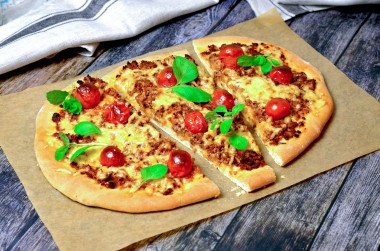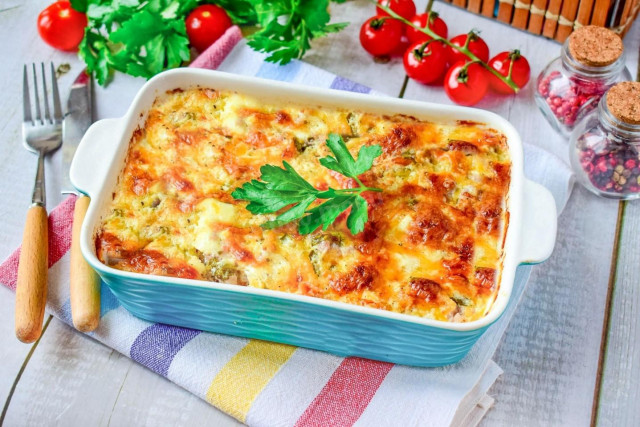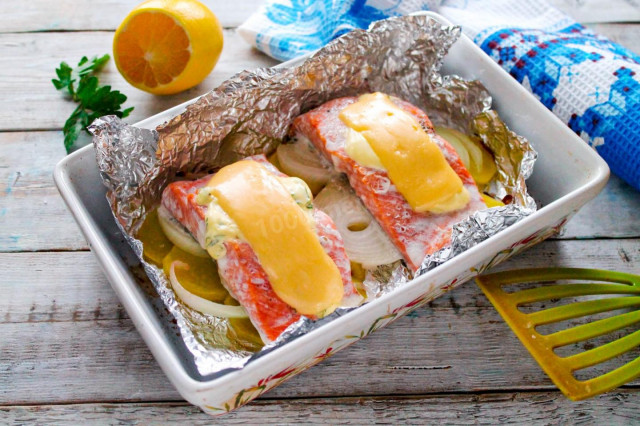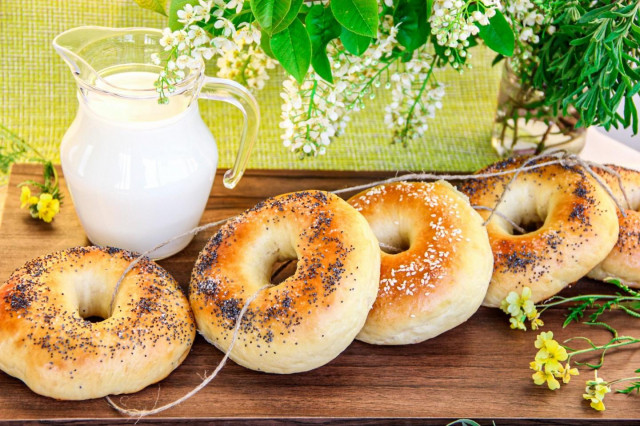Composition / ingredients
Step-by-step cooking
Step 1:
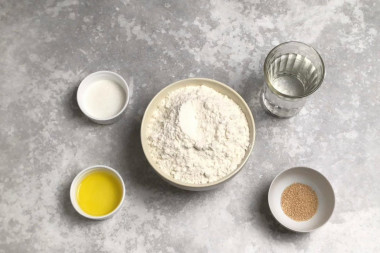
How to make pizza with minced meat in the oven? Prepare the products for the test. Put sugar to taste, you can do without it at all or replace it with honey. Ideally, take olive oil, but if it is not available, the usual vegetable oil will do.
Step 2:
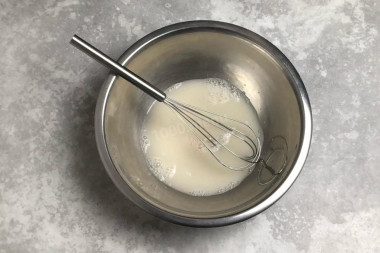
Warm up the water to a temperature of about 40 degrees - it should feel pleasantly warm, not hot. Too hot water will kill the yeast. Pour the water into a bowl, pour the yeast into it, mix well with a whisk.
Step 3:
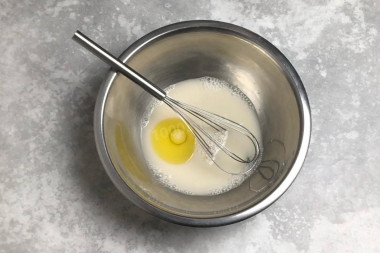
Next, put sugar, salt and olive oil in the water. Stir again.
Step 4:
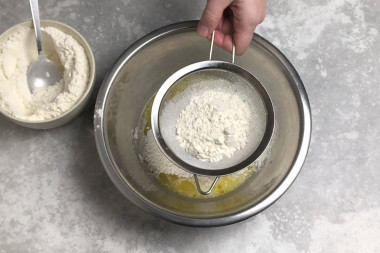
Sift wheat flour. Do not pour out all the flour at once. Depending on the quality, you may need less or more flour. It took me about 600 grams.
Step 5:

Start kneading the dough first with a spoon, then with your hand. If it seems to you that the dough is too thin, add flour. But be careful - it is very easy to shift it, then you risk getting a stiff dough.
Step 6:
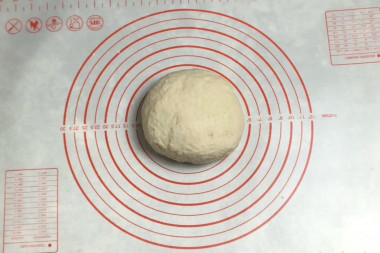
Now transfer the dough to a work surface sprinkled with flour. Knead a smooth, homogeneous dough with your hands.
Step 7:
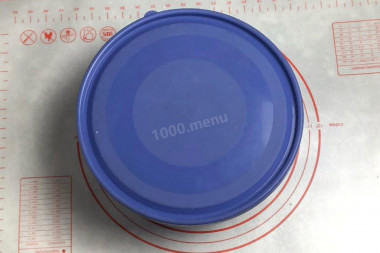
Put the dough in a bowl, cover the bowl with a lid and leave the dough to rise for about 30-40 minutes.
Step 8:
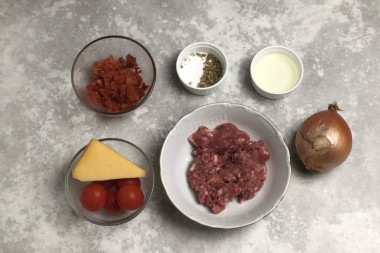
While the dough is rising, prepare the filling. My minced meat is beef-pork. I took cherry tomatoes. As a spice - herbs of Italian cuisine. Instead of tomato paste, I always take tomato passata - ground pulp. It may need a little more, according to your taste.
Step 9:

Peel the onion, wash, dry and cut into small cubes or thin strips.
Step 10:
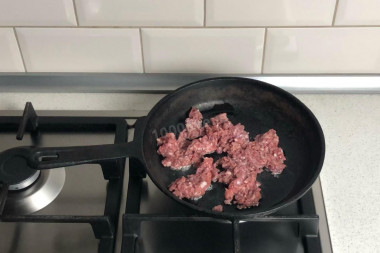
Heat the vegetable oil in a frying pan. Lay out the minced meat. Fry the minced meat for a few minutes, stirring it with a spatula.
Step 11:
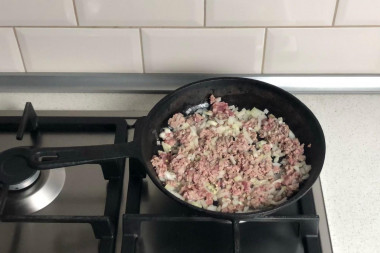
Add chopped onion, salt, spices to the minced meat. Mix it up.
Step 12:

Add tomato paste to the minced meat. Stir well. Cover the pan with a lid and fry the minced meat on low heat for about 5 minutes. Focus on your stove, do not move away from it so that nothing burns.
Step 13:
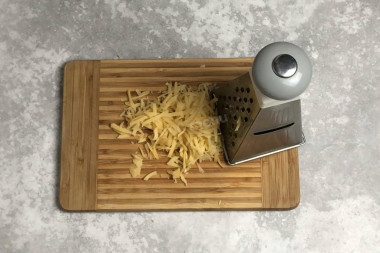
While the meat is frying, grate the cheese on a coarse grater.
Step 14:
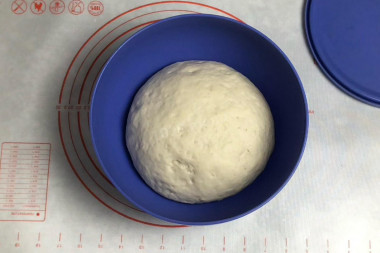
Meanwhile, the dough has risen well - it has doubled in size. If it has not risen, replace the yeast.
Step 15:
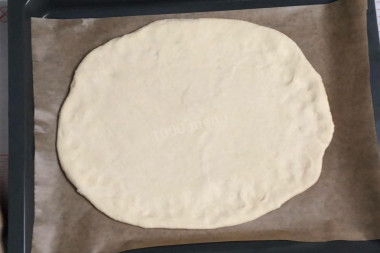
Put the dough on a table dusted with flour, knead it and roll it into a round cake according to the size of the future pizza. You can roll out not only a circle, but also an oval, square or rectangle.
Step 16:
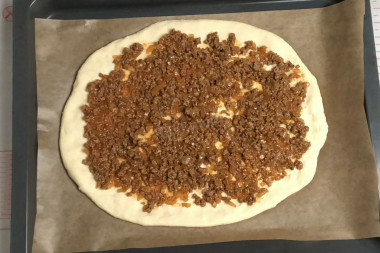
Put the minced meat on top of the dough in an even layer.
Step 17:
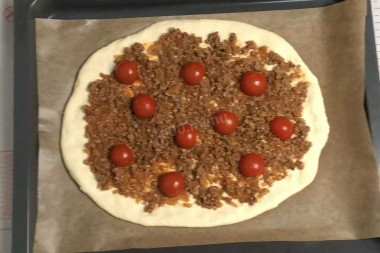
Spread the chopped tomatoes on top of the minced meat. I have this cherry, but you can take any others by slicing them into circles.
Step 18:

Sprinkle the pizza with grated cheese. You can change the amount of cheese to your liking.
Step 19:

Bake the pizza at a temperature of about 200-220 degrees for about 20-35 minutes. Focus on the features of your oven and the appearance of the pizza. Bon appetit!
From this amount of products, two pizzas are obtained.
Minced pizza is very tasty - juicy, spicy, I liked using cherry tomatoes instead of the usual ones.
Important! Using dry yeast, it should be borne in mind that they occur in two forms: active and instant (read the instructions carefully before use!).
Active dry yeast looks like beads or small balls. Before applying them, they must be brought out of "sleep mode". To do this, the active yeast is diluted in warm sweet water, milk or whey. The resulting bubbles, foam or "cap" indicate that the yeast is ready for further use. Active dry yeast must be brought to complete dissolution in the liquid, otherwise, due to the remaining grains, the dough may not rise and the baking will be spoiled (yeast grains that have not dissolved in the liquid and got into the dough will not disperse on their own, which means they will not work).
Instant dry yeast is easier to use. They do not need to be activated before use. Such yeast, along with other ingredients, is simply added to the dough. As a result, the baking time is reduced.
It should also be remembered that both types of dry yeast may differ in their activity from different manufacturers.
Be prepared for the fact that flour may need more or less than indicated in the recipe. Focus not on the amount of flour, but on the desired consistency of the dough. To avoid mistakes, read about flour and its properties!
Calorie content of products possible in the composition of the dish
- Onion - 41 kcal/100g
- Tomatoes - 23 kcal/100g
- Dutch cheese - 352 kcal/100g
- Swiss cheese - 335 kcal/100g
- Russian cheese - 366 kcal/100g
- Kostroma cheese - 345 kcal/100g
- Yaroslavsky cheese - 361 kcal/100g
- Altai cheese 50% fat content - 356 kcal/100g
- Soviet cheese - 400 kcal/100g
- Cheese "steppe" - 362 kcal/100g
- Uglichsky cheese - 347 kcal/100g
- Poshekhonsky cheese - 350 kcal/100g
- Lambert cheese - 377 kcal/100g
- Appnzeller cheese with 50% fat content - 400 kcal/100g
- Chester cheese with 50% fat content - 363 kcal/100g
- Edamer cheese with 40% fat content - 340 kcal/100g
- Cheese with mushrooms of 50% fat content - 395 kcal/100g
- Emmental cheese with 45% fat content - 420 kcal/100g
- Gouda cheese with 45% fat content - 356 kcal/100g
- Aiadeus cheese - 364 kcal/100g
- Dom blanc cheese (semi-hard) - 360 kcal/100g
- Lo spalmino cheese - 61 kcal/100g
- Cheese "etorki" (sheep, hard) - 401 kcal/100g
- White cheese - 100 kcal/100g
- Fat yellow cheese - 260 kcal/100g
- Altai cheese - 355 kcal/100g
- Kaunas cheese - 355 kcal/100g
- Latvian cheese - 316 kcal/100g
- Limburger cheese - 327 kcal/100g
- Lithuanian cheese - 250 kcal/100g
- Lake cheese - 350 kcal/100g
- Gruyere cheese - 396 kcal/100g
- Whole durum wheat flour fortified - 333 kcal/100g
- Whole durum wheat flour, universal - 364 kcal/100g
- Flour krupchatka - 348 kcal/100g
- Flour - 325 kcal/100g
- Granulated sugar - 398 kcal/100g
- Sugar - 398 kcal/100g
- Mixed minced meat - 351 kcal/100g
- Vegetable oil - 873 kcal/100g
- Tomato paste - 28 kcal/100g
- Salt - 0 kcal/100g
- Water - 0 kcal/100g
- Spices dry - 240 kcal/100g
- Olive oil - 913 kcal/100g
- Dry yeast - 410 kcal/100g


